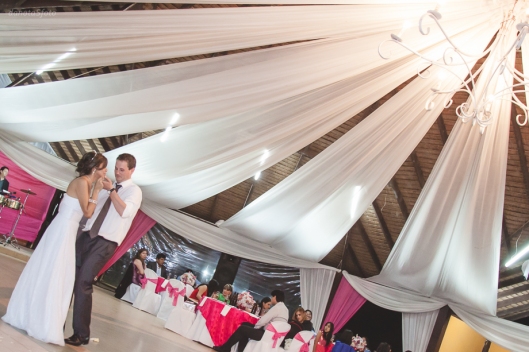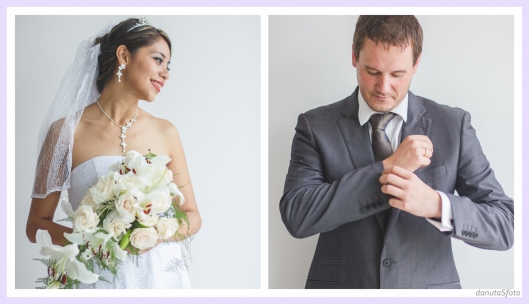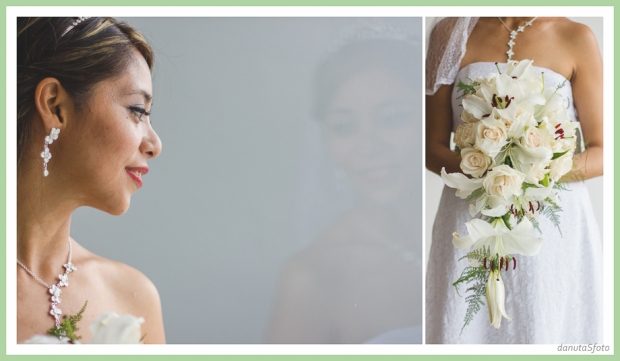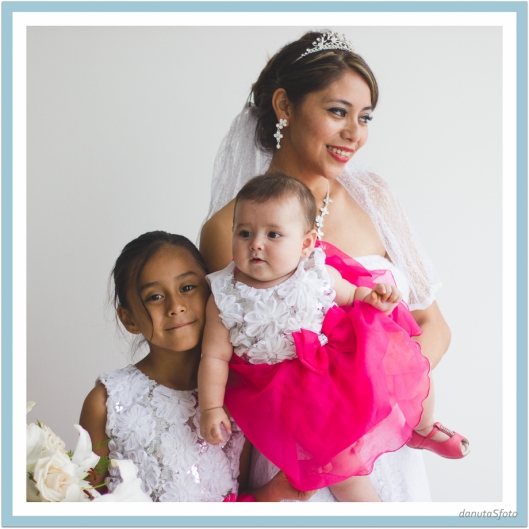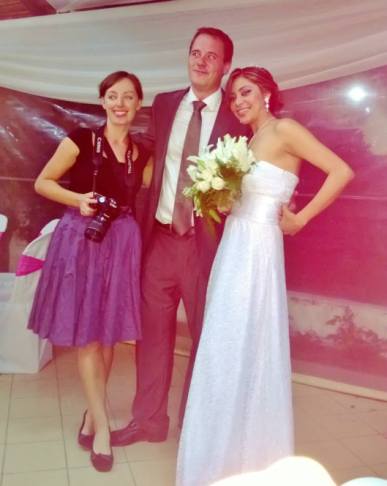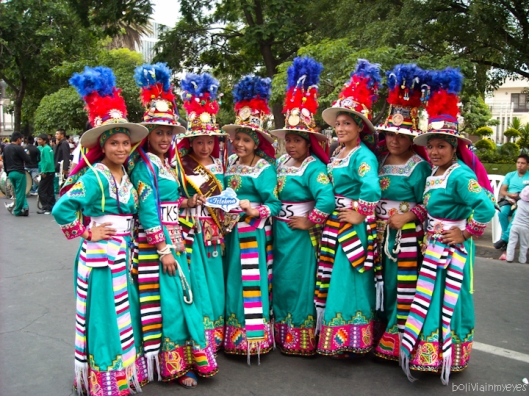Dia de los Muertos (lub Dia de los Difuntos) oznacza Dzień Zmarłych, również znany jako Dzień Zaduszny, obchodzony 2 listopada, a w Boliwii bedacy dniem wolnym od pracy. Wczesniejszy Todos Santos (Dzien Wszystkich Świętych) ma bardziej prywatny charakter.
Dia de los Muertos jest mieszanka rdzennych oraz chrześcijańskich (katolickich) przekonań religijnych. Tego dnia rodziny odwiedzaja groby swoich zmarłych, przynoszac na cmentarz potrawy, przygotowane poprzedniej nocy. Celebracja ma forme pikniku, podczas ktorego krewni przygotowuja miejsce przy ‘stole’ dla swojego zmarlego, czekajac na przybycie jego duszy. Boliwijczycy wierza, iz dusza zmarlego przybywa na ziemie o godzinie dwunastej w Dniu Wszystkich Swietych i zostaje na padole ziemskim przez nastepne 24 godziny. Jeśli zmarla osoba byla dzieckiem, rodzina rozklada na jej grobie (stole) biały obrus; czarny lub ciemny materiał jest używany, jezeli zmarlym jest osoba dorosla. Stol jest również ozdobiony świecami i zdjęciami. Niektórzy uważają, że zmarly powraca na ziemię, aby sprawdzić, czy jego rodzina i przyjaciele wciaz o nim pamietaja.
Dia de los Muertos (or Dia de los Difuntos) means Day of the Dead, which in the Catholic faith is also known as All Souls’ Day. In Bolivia it takes place on November 2, which is a public holiday, after the celebration of Todos Santos (All Saints’ Day) on November 1st, when people build an altar with the pictures of their loved ones, food and flowers at their homes.
On Dia de los Muertos indigenous customs mix with Christian (Catholic) religious beliefs. Families visit the tombs of their dead with a feast, which they prepare the night before. They spread out the feast in the form of a picnic, setting places for their dead relative at the “table” as they wait for the souls of the dead to “arrive”. They belive, that dead are living their graves at noon the day before and stay on Earth for 24 hours. If the dead person is a child, a white tablecloth is used. Black or dark cloth is used if the decised is an adult. The table is also adorned with candles and photos of the loved ones. Some believe the dead return to Earth to see if they are still being remembered by their families and friends.
Rodzina przygotowuje te wielka uczte na cmentarzu, bo wierzy, iz dusze potrzebują dużo energii, aby powrócić do swojego świata. Wszystko niezwykle, moze byc znakiem swiadczacym o tym, iz zmarly jest wsrod swych bliskich – nawet mucha siadajaca na jedzeniu moze byc interpretowana jako dusza. Wierzy sie rowniez, iz zmarli sa zawsze obecni wsrod ludzi, ale te dni sa dla nich szczegolne.
W zachodniej Boliwii, zgodnie z rdzennymi wierzenami ludow andyjskich,” stół ” ukladany jest zazwyczaj na trzech poziomach: Alaxpacha, symbolizuje niebo, Ak’apacha – ziemie i Mank’apacha – piekło. Zywność rozlozona jest wiec w określonej kolejności, w zaleznosci od tego, gdzie zostala wyprodukowana (pod ziemia, na ziemi czy nad ziemia).
Waznym skladnikiem uczty sa tanta wawas – rodzaj słodkiego pieczywa o różnych kształtach. Chleby maja zazwyczaj ksztalt dzieci, ktorych twarze są czesto dorabiane z gliny i wypiekane w ciescie. Figurki, reprezentuja dusze zmarlych, ktorych celebruje sie podczas dnia Wszystkich Swietych. Pieczywo moze miec rowniez ksztalt drabiny, po ktorej dusze zmarlych moga wspiac sie do nieba, gwiazdy, krzyża, czy anioła ze skrzydłami.
Another great feast is held in the cememntary on the 2nd because the dead need a lot of energy to return to their world. Anything out of the ordinary that takes place during the feast is taken as a sign that the dead have arrived (even the landing of a fly on food can be thus interpreted). The dead are always present but on this particular day, they either come down from heaven to join their families, or rise to heaven.
In Western Bolivia, according to Andean indigenous beliefs, the “table” is usually set in three levels: the Alaxpacha (heaven), the Ak’apacha (earth), and the Mank’apacha (hell). The preferred foods of the dead are taken into account when preparing this feast and the foods are set out in a certain order respecting the layers in which they are produced (sky, earth, underground).
One of the most important ingrediens on the ‘table’ are tanta wawas – sweet breads made into various different shapes. Some of the breads are shaped into human figurines with faces either decorated onto the breads or little clay heads baked into the bread. Figurines represent the souls of the decised, while other breads are shaped like ladders (so the souls of the dead can climb up to heaven), stars, crosses, or angels with wings to help children and babies to rise to heaven.
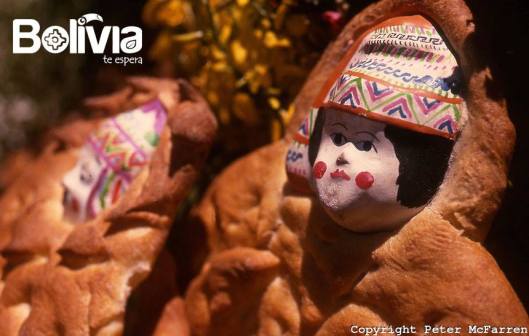
Wiele kultur andyjskich wierzy w znaczenie wzajemności. Ludzie zywia zmarlych, ktorzy w zamian zapewniaja deszcze i obfite zbiory. W tym miejscu warto przypomniec, iz w Boliwii pora deszczowa (wiosna/lato) rozpoczyna sie z polowa listopada. Często rodziny zatrudniaja w tym dniu (i nie tylko wtedy) zespoły muzyczne, grajace ulubione piosenki zmarlego. Płacą także dzieciom za modlitwe przy grobach swoich bliskich wierzac, że Bóg bardziej lituje się nad wstawiennictwem dzieci biednych niż nad tych, którzy nie są w potrzebie.
Many Andean cultures belief in the importance of reciprocity. The living feed the dead, whose bones are drying under the November sun, and the dead intervene with the earth to ensure she provides rains, which begin in mid-November. Often families hire bands or take other forms of music with them. They also pay children to recite prays at the tombs. Many believe God takes pity on the prayers of children or the poor more than on the prayers of those who are not in need.
Przed przybyciem Hiszpanów, zabalsamowane ciala zmarlych byly wydobywane z grobów, aby mogli oni, w sensie bardziej doslownym, uczestniczyc w uczcie wraz z rodzina. Jako ze katoliccy Hiszpanie zabronili tego rytuału (tak jak kosciol zabronil obrzadku Dziadow w Polsce), członek rodziny często przebiera sie za zmarlego i tak pojawia sie przy rodzinnym w grobie. Biorac udzial w uczcie, wypytuje poszczegolnych czlonkow rodziny, jak spedzili mijajacy rok. Czasami osoba udajaca “zmarlego” daje porady dzieciom, ktore wraz z koncem dnia przeganiaja przebranego z cmentarza, aby mieć pewność, iz dusza zmarlego nie pozostanie w jego ciele, by mieszkac wsrod zywych. Sa tez osoby, ktore wcale nie odwiedzaja cmentarza, przygotowujac ucztę w domu, a gościom, którzy ich w tym czasie odwiedzaja, oferowane są wszystkie ulubione potrawy zmarlego.
Before the arrival of the Spanish, the dead (who at the time were embalmed) were taken out of their tombs. Friends and family members would dance with them, walk them around the cemetery, eat a meal with them and then put them back in their tombs. When the Spanish arrived, they forbade this ritual. So today, a family member often dresses up to look like a dead family member and appears at the family reunion at the grave. He or she takes part in the feast that has been prepared and asks how the family has been over the past year. Sometimes the “dead” person gives advice to the children. When the day ends, the children take palm fronds and chase the person in the costume out of the cemetery just to be sure the soul of the real dead person doesn’t give in to the temptation of inhabiting their body in order to remain among the living. Many people don’t take the feast to the cemetery at all. Instead, they prepare a feast at home and guests who visit are offered all the favorite foods of the dead.
Niestety, osobiscie nie mialam szczescia doswiadczyc opisanych powyzej zwyczajow, jako ze drugi rok z rzedu spedzam ten dzien w tropikach. Poszlismy dzis z rana na Cementario General w Santa Cruz i na wlasne oczy przekonalismy sie, ze Cambas obchodza Zaduszki raczej w tradycji chrzescijanskiej. Rodziny, odwiedzajace swych bliskich, przynosily kwiaty i swieczki, a jedyna forme ucztowania oferowali sprzedawcy kawy i czipsow, krazacy po cmentarzu.
Unfortunately, I hadn’t personally experienced these intresting habits described above, as I have spent the second year in a row in the tropics. Today in the morning we went to Cementario General in Sata Cruz and with our own eyes we saw that Camba people celebrate Dia de los Muertos in the Christian tradition. Families visiting their loved ones brought flowers and candles, and the only form of feasting were offered by sellers selling coffee and chips, circling around cemetery.




Przyznam szczerze – bylam troche zawiedziona. Wiecej zycia pamietam z cmentarza w Cochabambie, ktory odwiedzilismy w zeszlym roku, podczas Dnia Matki. Moze winny byl temu deszcz? Jedno jest pewne, zeby na wlasne oczy zobaczyc te niezwykle poganskie tradycje Swieta Zmarlych w Boliwii, trzeba w tym dniu znalesc sie po stronie Zachodniej kraju, najlepiej w La Paz, lub okolicznych miasteczkach i wioskach, gdzie swieto to wyglada mniej wiecej tak:
To be honest – I was a little disappointed. Even the cemetery in Cochabamba, which we visited last year on when Mother’s Day, was more lively. Maybe we can blame it on rain? One thing is certain, if we ever want to experience these very interetsing and colourful Bolivian traditions, we needto find ourselves in the West part of the country, the best in La Paz and the surrounding towns and villages, where this day looks more less like that:

Fot. globalpost.com
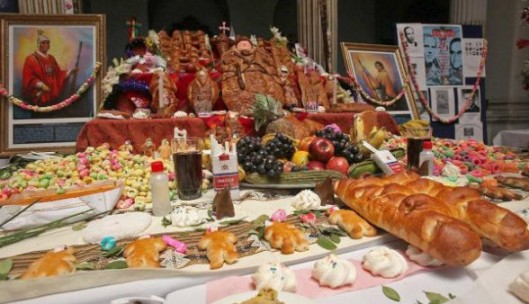
Fot. lostiempos.bo

Fot. jornadanet.com
Tydzien pozniej, 9 listopada Zachodnia Boliwia celebruje starozytny rytual – ‘Dzien czaszek’ (Dia de los Natitas). W czasach prekolumbijskich rdzenni mieszkancy regionow Andyjskich (Qechua i Aymara) wykopywali kości swoich zmarlych przodków w trzecim roku po pogrzebie, by oddac im czesc. Legenda glosi, iz kazdy czlowiek posiada 7 dusz, a jedna z nich znajduje sie wlasnie w szkielecie. Dzis, potomkowie wykopuja tylko czaszke i przenosza ja do domu rodzinnego, by dusza zmarlego czuwala nad domostwem. 9 listopada, czaszki dekoruje sie świeżymi kwiatami, kapeluszami oraz skladane sa im ofiary z papierosów, liści koki, alkoholu i różnych innych elementów, w podziece za ochrone. Czaszki są rowniez przynoszone na centralny cmentarz w La Paz, z okazji specjalnej Mszy i błogosławieństwa. Warto pamietac, iz jezeli czaszki pozostawione sa bez opieki i zaniedbane, moga przyniesc nieszczescie ich posiadaczowi!
And one week later, on 9th of November native Bolivians of Andean origin (Quechua and Aymara) follow other ancient ritual called Dia de las Nenitas – The Day of Skulls. Legend has it that every being is blessed with seven souls and of the seven, one is found in the skeleton. In pre-Columbian times indigenous Andeans had a tradition of sharing a day with the bones of their ancestors on the third year after burial. However, only the skulls are used today. Traditionally, the skulls of family members are kept at home to watch over the family and protect them during the year. On November 9, the family crowns the skulls with fresh flowers, sometimes also dressing them in various garments, and making offerings of cigarettes, coca leaves, alcohol, and various other items in thanks for the year’s protection. The skulls are also sometimes taken to the central cemetery in La Paz for a special Mass and blessing. It’s worth to remember that ancestors’ remains can bring both good luck and bad luck, when not taken care of!
Boo!

Fot. Herald Sun.
Źródła/ Sources: Bolivia Bella, www.huffingtonpost.com i wlasne obserwacje/ own observations.
More photos / wiecej zdjec:




Meanwhile in La Paz / Tymczasem w La Paz:

Fot. libertaddigital.com

Fot. lostiempos.bo

Fot. spanish.peopledaily.com.cn
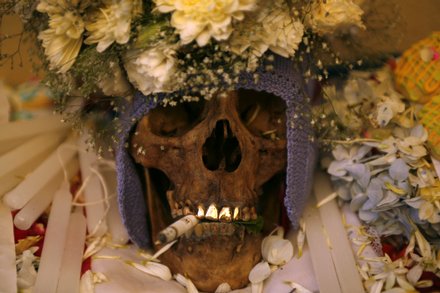
Fot. eagad.com
-17.866667-63
























